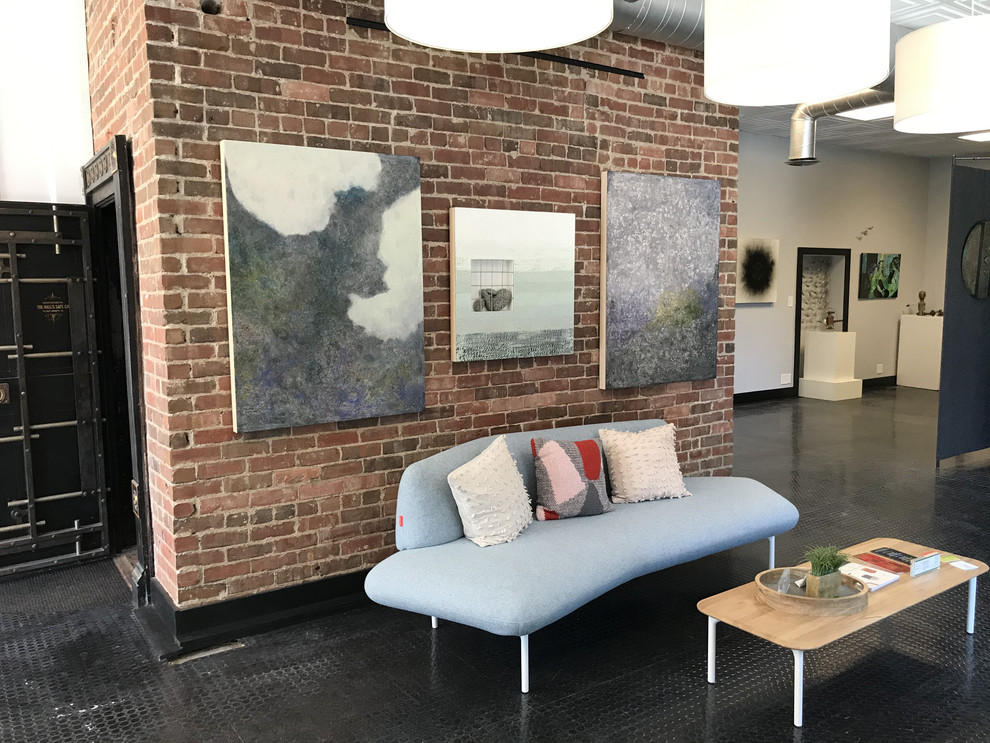How RFID tracking works to support efficiency and authenticity
While art invokes the spectrum of our feelings, art buyers are also purchasing peace of mind because collectors generally trust artists and dealers. Confidence in these transactions is the principal support for valuation, so it’s puzzling that only a small fraction of art sold carries robust authentication.
Art crime remains the third highest-grossing criminal trade in the world. Counterfeit persists and is hard to measure beyond high profile cases like Philip Righter, but theft is common, with “grab and run” accounting for about half of the loss according to the FBI.
Most artists, galleries, and collectors rely on some level of physical security. Over time, arts protective layers have grown more sophisticated, from guards and glass to cameras and sensors. Even the science of authentication continues to advance in the face of persistent threats.
Working toward nominal authenticity and physical security are certainly worthwhile pursuits. However, the market thinks art businesses can do more. In fact, Deloitte’s Art & Finance reporting finds stakeholders persistently agree that the art market needs to modernize its business practices to meet the expected standards of a transparent, trustworthy, and developed marketplace.
FOCUSING ON WHAT MATTERS
In this context, let’s reinforce that most artists and galleries are simply trying to run a business – building relationships and making sales in a highly fragmented industry.
“We spend a lot of time with our clients,” says Susan Watts, owner of Olson-Larsen Galleries, a full-service gallery in Iowa representing Midwest artists. “Our sales cycle is usually quite long – weeks, if not months. Our relationships are so important to our business and investing in relationships has benefitted us during the COVID-19 pandemic.”

Further, the basic need to keep track of inventory and sales is not unique to art businesses, and modernizing business practices looks a lot like what Metalcraft has seen in other industries – moving from spreadsheets to more sophisticated systems for asset tracking. Specifically, there are now a host of cloud-based management systems for galleries and collectors. For example, Watts relies on Art Systems, an automated database software, for managing her gallery’s business.
Metalcraft got its start supporting asset identification and tracking processes in 1950, building a global business selling bar code tags, which still deliver value today by reducing the time and errors associated with manual data entry. However, barcodes – like spreadsheets – require significant human effort. Modernizing art businesses also can involve what Metalcraft has seen in other industries: evolving systems to address security and management challenges using radio frequency identification (RFID).
THE CASE FOR RFID
RFID technology automates many business processes by using electromagnetic fields to transmit data from an RFID tag to a reader, allowing for accurate, real-time data useful for management tasks – for example, tracking artwork as it is received, moved, or sold. The tags can be read by handheld devices or fixed antennae at doors or points of sale.
Indeed, the needs of art businesses aren’t much different than others Metalcraft has served in developing a range of RFID tags to durably meet the demands of customers tracking inventory and other assets. They supported their first art tracking project in 2012 when Silent Partner Technologies brought their background in RFID and barcode tracking to the development of a flexible RFID solution for asset management and theft deterrence for art collectors and galleries.
“Display, storage, transfers, and sales are all important events when we’re talking about high-value art,” said Ted Kostis, president of Silent Partner Technologies. “You want to know where your artwork is at all times.”
The company’s web-based solution uses a mix of technologies suited to the needs of the individual collection manager. For some galleries, Kostis installs antennae to complete a web-based inventory automatically every few minutes. Other art clients are content to complete inventory with a handheld RFID reader during periodic inventory or handling – moving from storage to display, for example.
In all instances, the premise is that each piece of art is detailed in a database and assigned to an RFID tag that is attached discretely to the back or inside of the artwork – each tag’s pre-encoded number links to the data, allowing a traceable history of each piece accessible via the Web.
“One of the real benefits of RFID is that it greatly reduces the time to locate art and removes the need to handle a piece during identification,” said Kostis. Wireless scanning via RFID also reduces the potential for catastrophe, such as dropping or destroying a work of art. Collection managers can identify art without moving it in a gallery or unpacking it from a shipping crate because tags can be read right through the crate — reducing labor, time, and potential damage.
Using RFID in an asset tracking solution gives owners and sellers improved visibility and control of high-ticketed gallery and museum artworks. They can run more frequent inventory counts to get a handle on the whereabouts of the pieces of art at each location.
“Many in the art world still don’t know that RFID exists,” said Kostis. “There’s so much potential. RFID can help art sellers confidently expand. Museums and private collections get better visibility to high-value artwork with less effort.” For example, Kostis’ testing with Metalcraft tags inventoried 93 larger paintings in a 30,000 square foot floor in a New York City high-rise in under three minutes and read 237 paintings inside of a storage room under two minutes. “How could one person do that work without RFID?” asks Kostis. “It would easily take an hour, but most pieces aren’t even moveable alone.”
AUTHENTICITY AND TRUST
At Metalcraft, RFID promises faster, better art collection management. Beyond saving time and money, it allows people to focus on relationship-building that strengthens trust.

In October, Metalcraft introduced a tamper-proof RFID tag for stronger asset tracking and authentication. The DuraDestruct RFID security tags are durable and can’t be transferred, featuring a patent-pending construction that renders labels useless upon tampering or removal. These are discrete tags, only 4 inches wide, 1 inch tall and just .02 inches thick, that can be read from a distance of 40 feet in the context of an RFID-based art tracking system. For galleries and collectors, it’s another way to offer peace of mind to buyers as it provides an additional level of security for tracking and authenticating high-value assets.
Art remains vital. Now more than ever, it’s important to build efficiency and confidence in the sharing of art with the world.
About the author:
Kyle Bermel is Chief Operating Officer of Metalcraft, a designer, engineer, and manufacturer of custom property identification solutions.


